Last weekend’s adventure was hiking the northern peak of Mount Aragats! Aragats was created by a volcanic eruption and is now a huge crater surrounded by four peaks. They’re creatively named the northern, southern, eastern, and western peaks, and the northern peak is the highest point in Armenia at an elevation of 4,091 meters (13,420 feet).
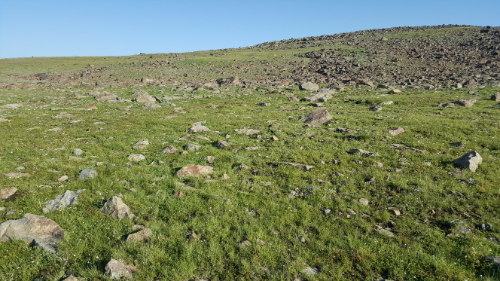
It has also been an important symbol for Armenians since the pre-Christian days and has pagan and Christian shrines scattered around. Many of them are hidden, and according to the legends, some are hidden using methods more magical than simple camouflage. Remember our friend St. Gregory? The one who lived in a pit for years and helped to convert the Armenian king to Christianity in 301AD? Well, he was a VERY busy guy because he also used to climb Aragats pray and at night was guided by a lantern “hanging from heaven”. The lantern supposedly still appears on the mountain, but only the worthy can see it.
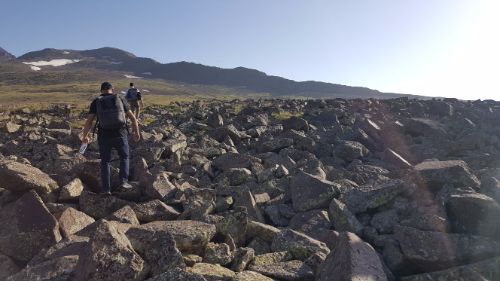
When Sarah and I went on that tour in Yerevan, the tour guide talked about how he and some friends hiked the northern peak, and from that moment, I decided that I was going to do it if I got the chance. I didn’t know at the time if I would find any friends who liked to hike, but I was hoping! Sure enough, about a week into being in Gyumri, I heard about a group forming to hike it, and I signed myself up. I was worried because I hadn’t really planned on doing any serious hiking while here, so I didn’t bring my hiking boots. It was hard to find any real information online about the hike, but from the people we talked to and the information we got from the guide, it sounded like boots would be a good idea. I ended up being the absolute luckiest because a friend was coming to visit Armenia the week before the hike, and she brought my boots with her! I’m telling you, if you ever do this hike, boots or hiking shoes with a hard sole and waterproofing are essential! We even hiked it at the time of year when there’s the least snow, but it doesn’t matter. Trust me.

We set out from Gyumri at 4:15AM, and yes, that was as miserable as it sounds. My host mom was sure that I was saying the wrong number when I told her when I had to leave the house and then told me to have fun and that she would still be sleeping. The drive to Kari Lake, the spot where the hikes start, takes a little more than 2 hours from Gyumri, and it took us even longer because the taxi drivers needed to take a couple smoke breaks, we hit an animal on the way, and we got stuck behind some farm equipment. Off to a good start.
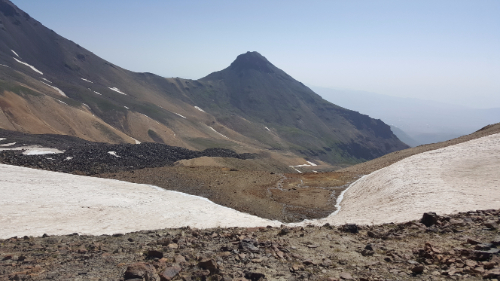
The hike is supposed to take like 8-16 hours or something like that. We were shooting for finishing it in 10, but I had no idea what to expect. Thankfully, we had a guide, so we didn’t really have to know much. I totally didn’t realize how much hiking you have to do to just to make it to the base of the north peak. We set out from the lake, walked past the southern peak, and crossed into the crater through the low-ish point between the western and southern peaks. When I realized that all of the hiking up we had done wasn’t even the beginning of the hike to the peak, I was horrified. We had to hike down into the crater before hiking all the way up again. It took us three hours just to make it to the base of the northern peak.
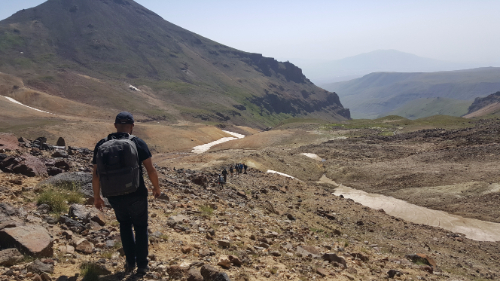
After a break, we started to make our way up. The terrain was basically all rocks. Little rocks and medium sized rocks with sporadic plants. The lack of much plant growth and dirt to hold the rocks in place meant that every step was a potential rock slide. Perfect. This is where the recommendation to bring hiking poles started to make sense. You should bring hiking poles. It’s certainly possible without them but I would estimate approximately 10000x easier/less terrifying with them.

The first half of the hike up to the peak isn’t really that bad. It’s steep, but you can find paths where the rocks aren’t as unstable, and the only part of me that was getting tired was my calves. We stopped to take a break in the least comfortable location (imagine like a 45-degree slope with sharp rocks poking into you) before starting the second half. From that point on, it was way worse. The inclines were steeper, the rocks were smaller and less secure, and the drop offs were mildly terrifying. I’m not afraid of heights, but I am afraid of rock sliding down the side of a mountain. I’m not a fan of feeling like I can’t trust my feet to stay where I put them, so I started going extra slowly. The other people in my group must be half mountain goat because none of them seemed to be that bothered by it (though I’m sure that’s partly because if they were nervous, they just didn’t show it). I let them go ahead of me because, in that kind of situation, I don’t like feeling rushed or like I’m holding people up. I knew that I would make it to the top, it was just a question of the speed at which that would take place.
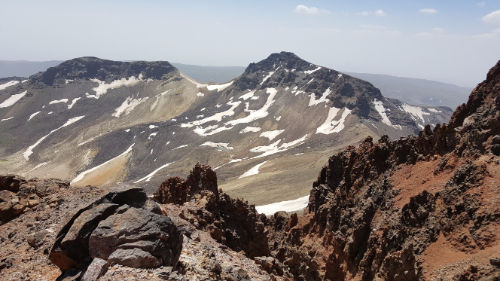
I think it took us something like 3 hours to make it to the top. Everyone else could have probably done it in 2-1/2 or less, but I was definitely the weakest link in that situation. Fear is a really interesting thing. There are so many things that I’m not afraid of, and there are a lot of similar situations where I would be completely fine. I think that in that case, it was a combination of having a couple foot slips that freaked me out, not wanting to slow down the group (though that happened anyway), and feeling a little unbalanced because of the altitude. I never had the thought that I couldn’t do it or that I should turn around; I just needed to do it my own way and to go at my own pace.
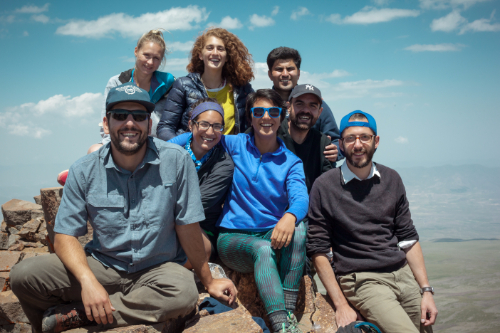
The view from the top was awesome, and the feeling of making it there was even better. I chose to ignore the fact that I was also going to have to make it back down because I didn’t want to spoil the moment. We sat at the top, ate some snacks, and enjoyed the views of the other Aragats peaks and the surrounding landscape until the guide insisted that we start heading back down.
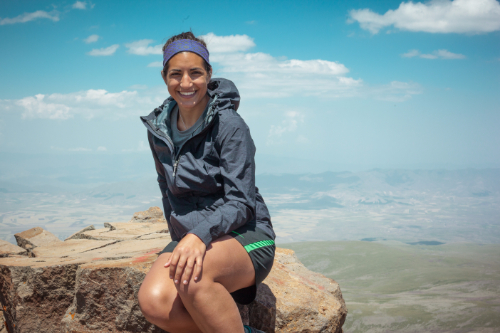

I took my place at the back of the group to avoid slowing anyone down, and the guide came over and offered me his hand. I knew that I could make it down without any help, so the choice was really just between 1) insisting on doing it myself, slowing down the group even more, and feeling terrified the entire descent and 2) accepting some help, moving at a reasonable speed, and feeling slightly at ease. I’m all about doing things for myself, but there’s also no shame in accepting help when it’s offered. I took his hand, and he basically dragged me down the mountain.

At the bottom, we had to decide how we wanted to get back to the lake. The “fastest” option won, but fastest definitely didn’t mean easiest… in this case, it meant steepest. There’s nothing worse than finishing climbing the mountain that you came to climb just to realize that you need to climb two more mountains to get home. We went up and down FOUR times on the hike. The actual northern peak part of the hike was definitely challenging, but if that was all you had to do, it wouldn’t be bad at all. We spent more than half of the total hike time going to and coming from the base of the mountain!
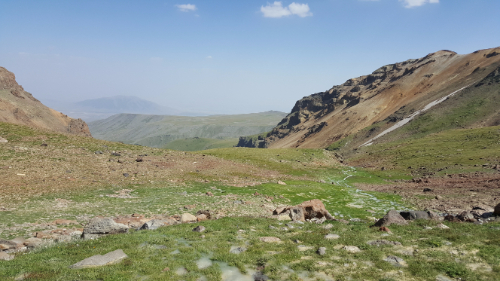
We had one river, two more aggressive uphill climbs, three snow patches, and seemingly endless wildflower spotted fields to make it through before the end of the hike. For all of that though, I was fine mentally. It was just something about the sliding rocks on the north peak that got me into a funk.


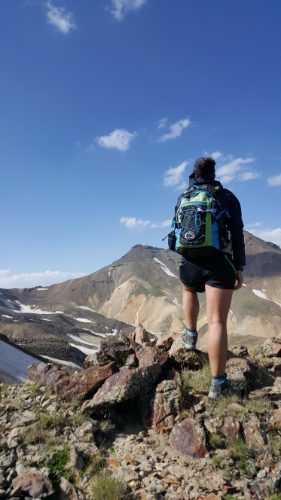

When we made it back to the lake, I wanted nothing more than to go to sleep. The whole hike took us about 11 hours and 20 minutes, including our million breaks and my pokiness on the way to the peak. All things considered, I thought that was pretty good. We loaded back into the cabs and made our way down the windy roads down the mountain and home to Gyumri. I got home a little after 10PM and went immediately to bed. I must have looked a mess because my host mom didn’t even try to force feed me when I said I just wanted to sleep.
All in all, I’m glad I did it, and even more, I’m glad that I never have to do it again.
P.S. If you ever find yourself planning to hike the northern peak, talk to me. Hiking boots. Hiking poles. Late summer. Lots of water.
